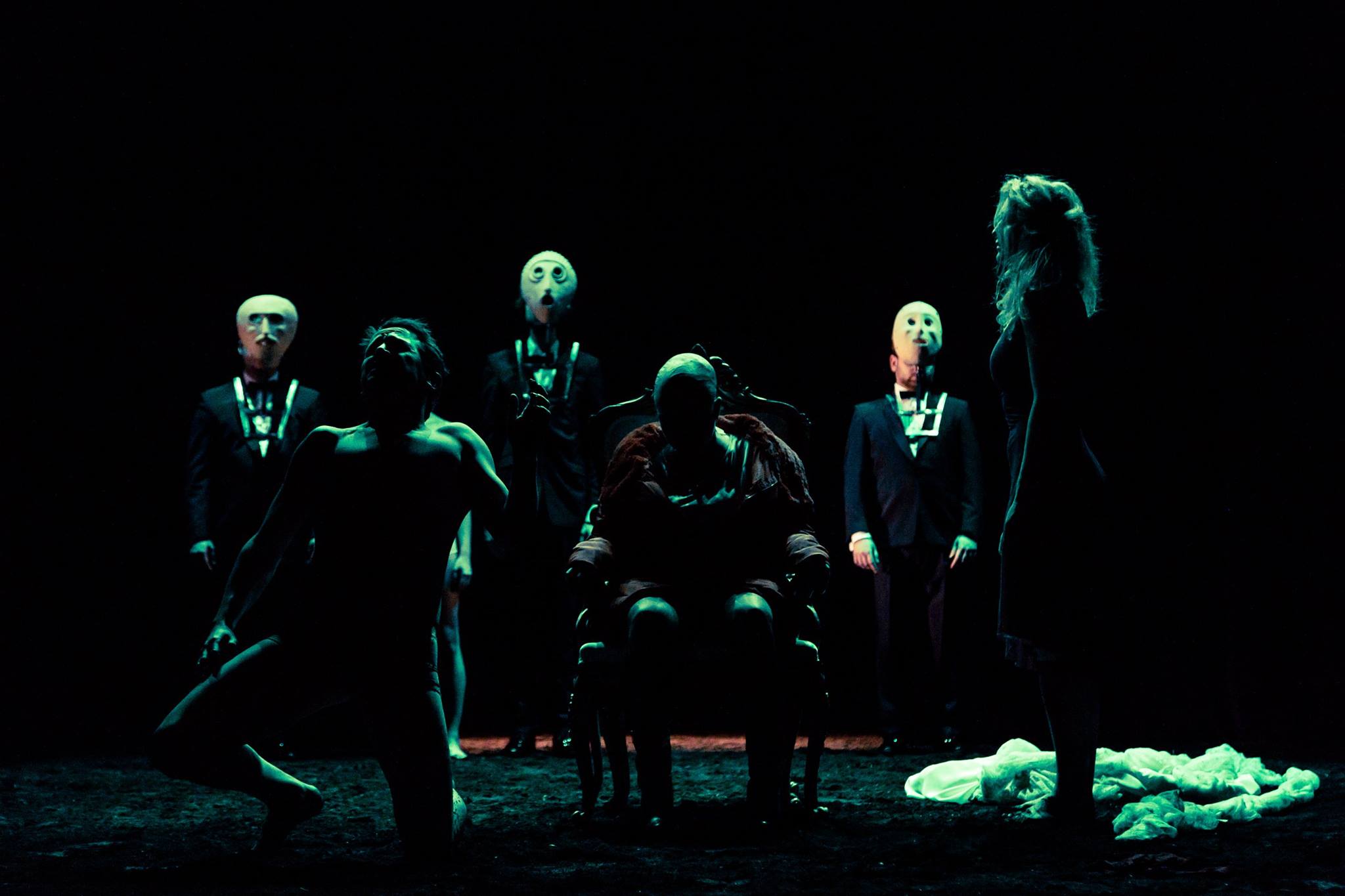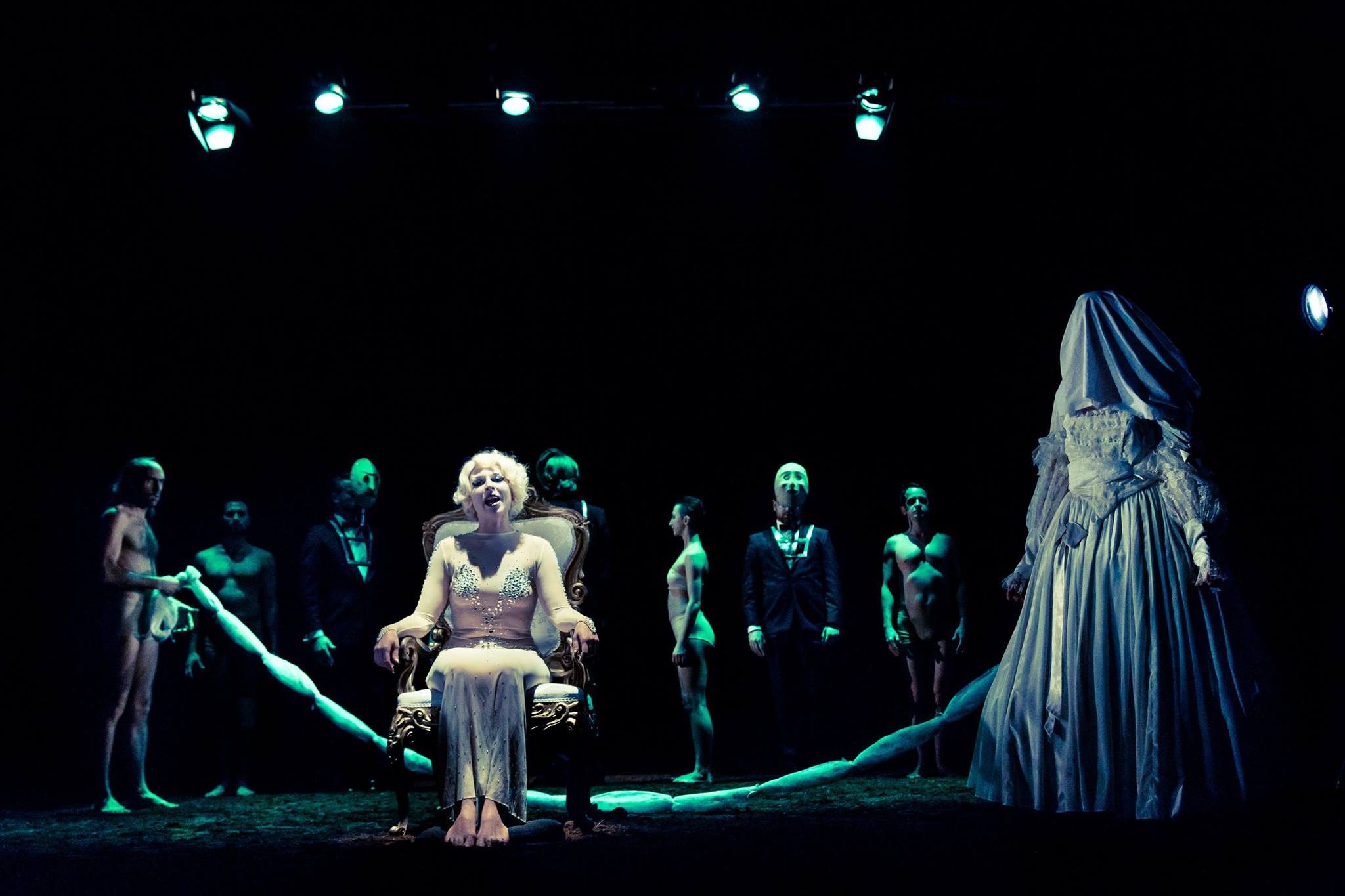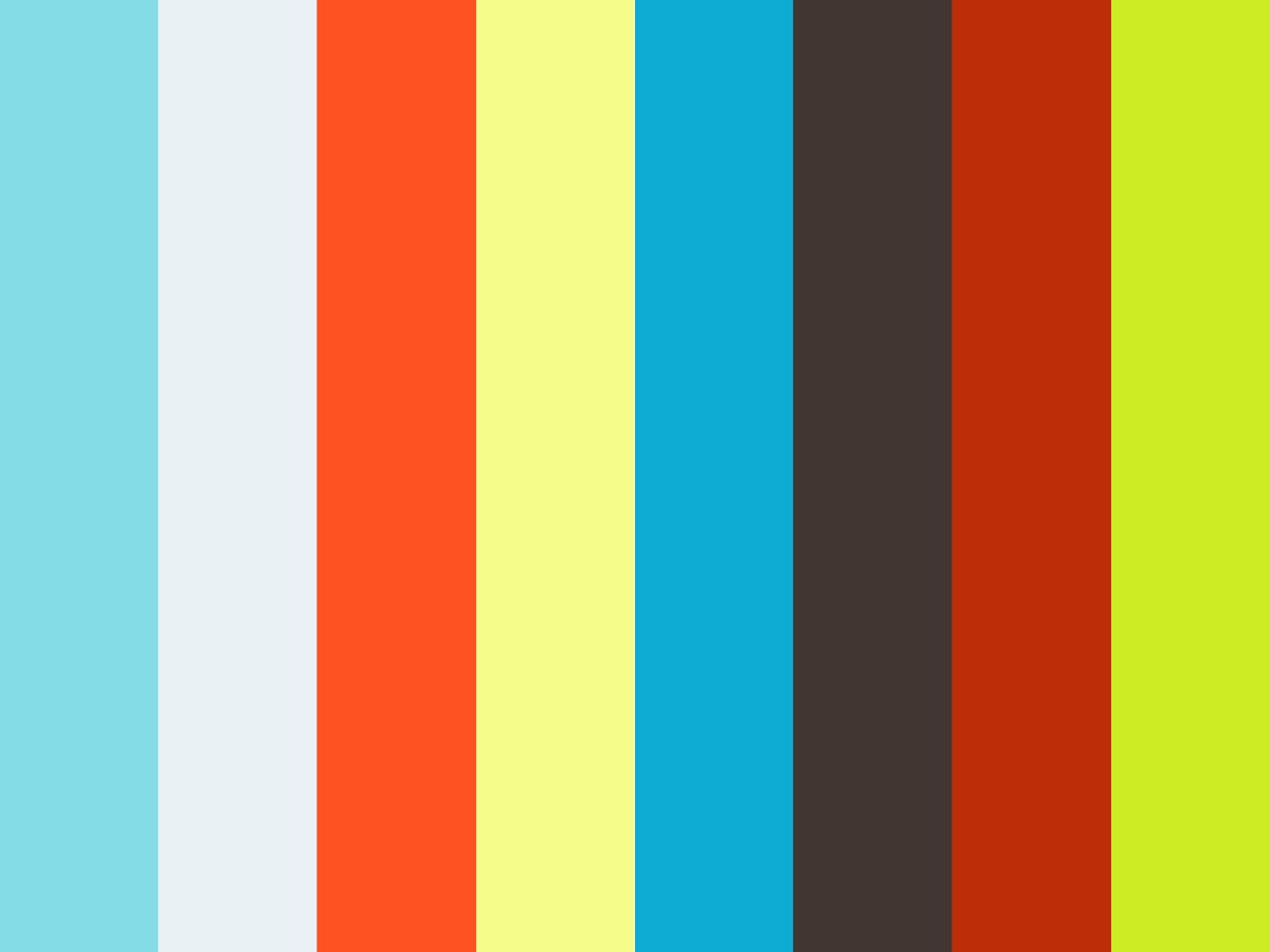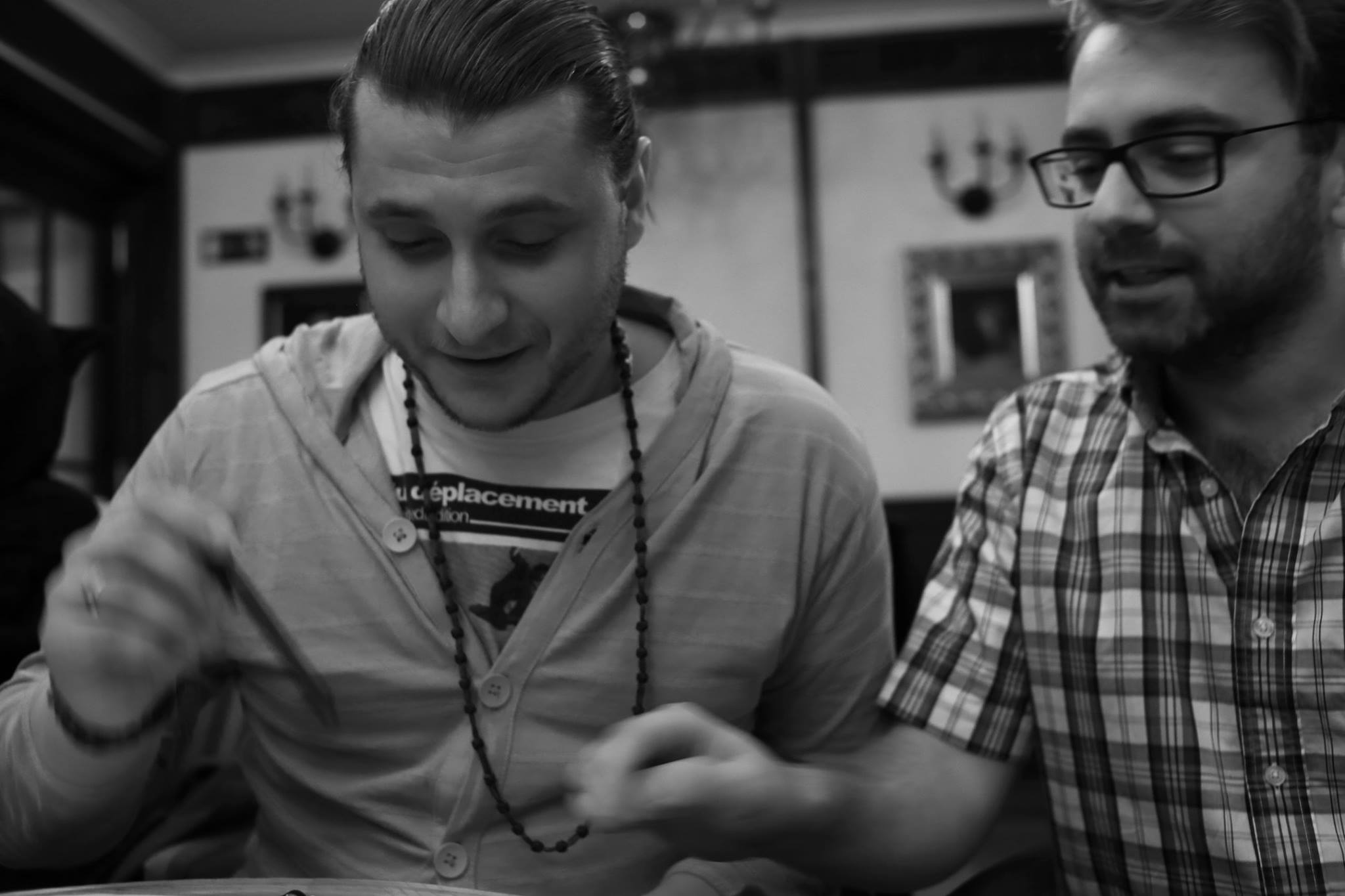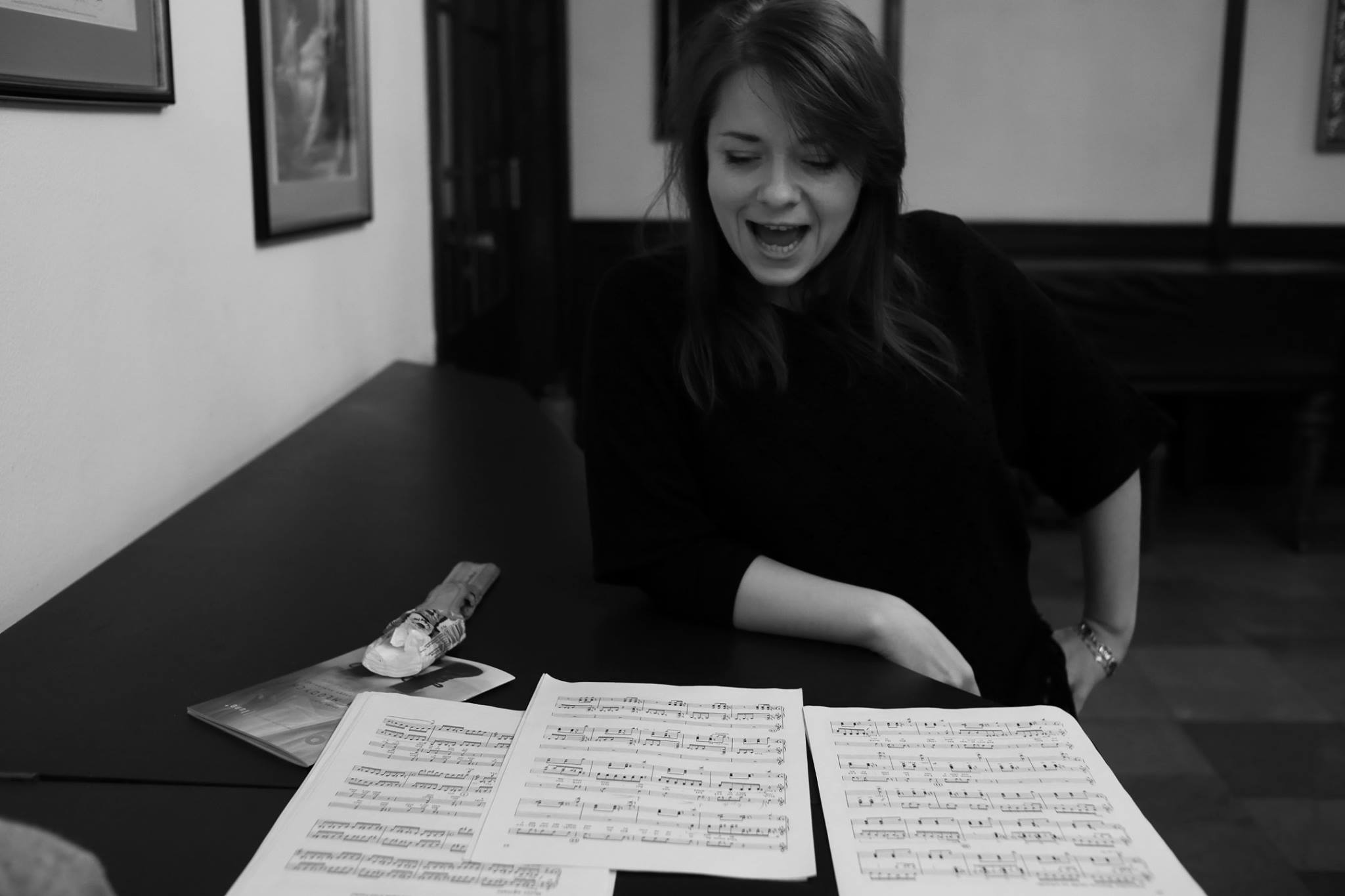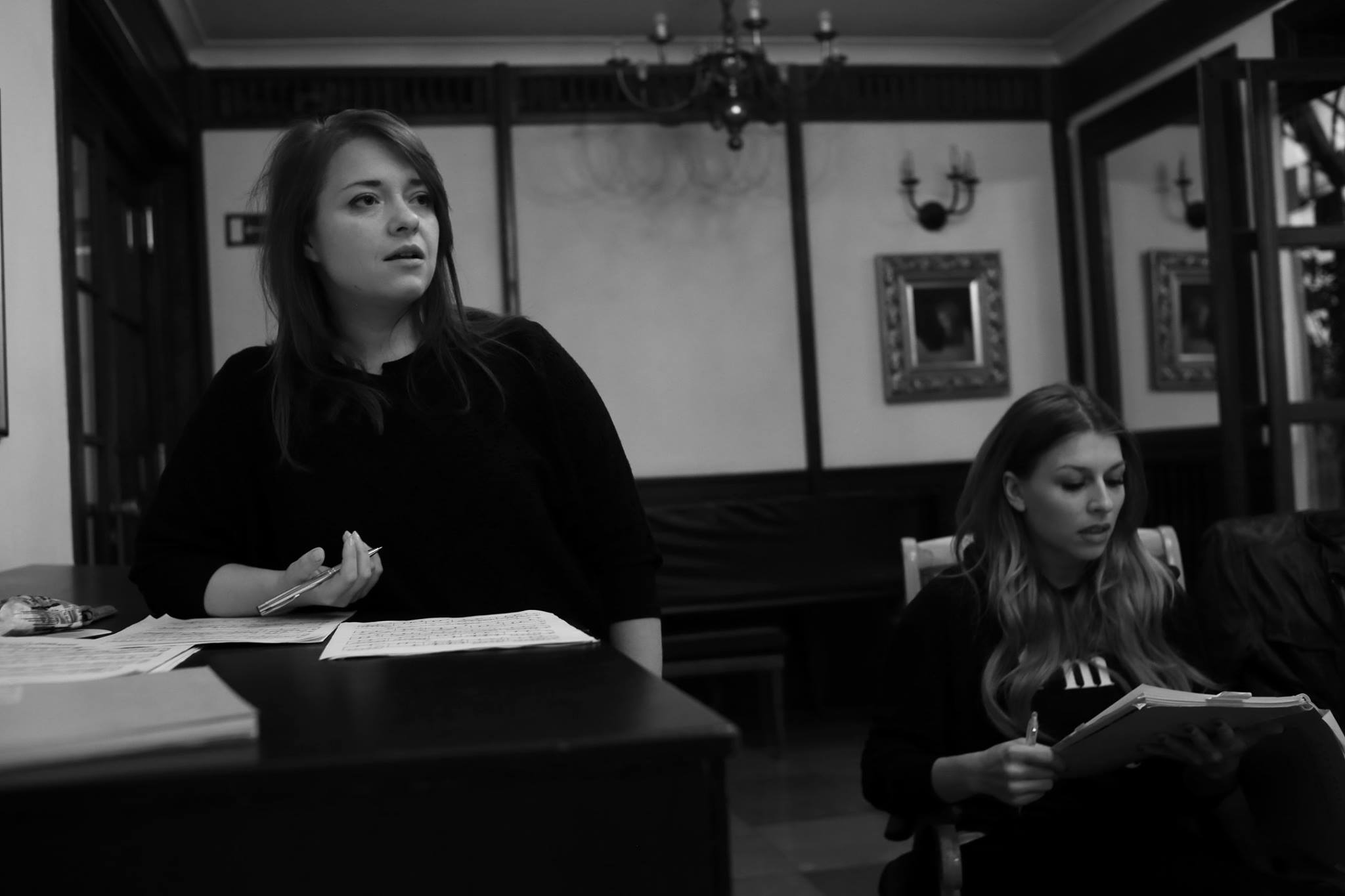opera performance
Seven Deadly Sins / Siedem Grzechów Głównych
music by Kurt Weill,
with libretto by Bertolt Brecht
Premiere: 20 and 21 of November 2015, 19:00
YOUNG STAGE / SCENA MŁODYCH,
Poland, WARSAW CHAMBER OPERA /
Polska, WARSZAWSKA OPERA KAMERALNA,
Luna + Foundation Beata Bierońska-Lach,
Seven Deadly Sins / Siedem Grzechów Głównych premiere in Warsaw Chamber Opera, photographs by Jarosław Misiewicz ©
Seven Deadly Sins Poster by Karolina Fandrejewska ©
CAST
Anna I - Monika Łopuszyńska, Olga Rusin
Anna II - Ewelina Grzechnik
Mother - Jasin Rammal - Rykała, Alicja Złoch
Father - Aleksander Kruczek, Moti Vation
Older Brother - Hubert Zapiór, Ireneusz Wojaczek
Younger Brother - Rafal Tomkiewicz, Artem Manuilov
conductor - Grzegorz Wierus
director - Mika Rosenfeld
choreographer - Marta Grądzka
stage designer / costumes - Karolina Fandrejewska
lights designer - Paulina Góral
project coordinator - Grzegorz Hardej
WHAT THE PERFORMANCE IS ABOUT?
The music of Kurt Weill and complex lyrics of Bertolt Brecht in Seven deadly sins create an allegory of our world where humans are dependant on a system of aggression. Our subject for Seven deadly sins is the world which lacks a mother. A woman divided in two different personalities is the motive, which is as old as prehistoric culture. Light and darkness, life and death both are two parts of the nature of women. We decided to follow these origins and find more in archetypes from previous cultures. Our inspirations take from old myths of Innana from Sumerian myths, Lilith and Salome from the Old Testament, Ariadne and Persephone from Greek Myths, or more modern Beatrice from the Divine Comedy by Dante Alighieri. We are inspired also by prehistoric archeological remains from old cultures of Malta, Crete, Cyprus, Turkey and Israel. Our idea is to build a vision of a world which will not be related to anyone time, but will have relational archetypes which are common to different cultures, and might connect present times to remains and signs from old cultures.
Monika Łopuszyńska - soprano singer, Anna I
Olga Rusin - soprano singer, Anna I
Ewelina Grzechnik - dancer, Anna II
The history of Anna reveals the archetypal journey of a young woman who leaves home to find her place in the world. Every time Anna has the strength to get up she is forced to lie down again. Anna II in our interpretation is a woman in her 40ties. We see her sleeping in a huge bed made from white stone. She can’t get up. She falls asleep, then wakes up, trying to sleep again and again, to run away from reality. We observe a picture of her mind in the process of inner conflict between desire to die, to let everything go or to survive, in order to live again. She is in a state of depression. We are not sure any more if she is dreaming right now or whether she is awake. Next to her bed sits a black lady, Anna I who observes everything and comments, forcing the situations to happen. Anna II is like a living body with its feelings, and Anna I represents intellect, who wants to suppress everything except herself. Their relationship is in constant conflict, and we observe how it develops and changes during the story that happens on the stage. The whole story is a picture of Anna’s mind. She is thrown into the middle of the action, moving smoothly in different places and times. She is surrounded by the same men who take different roles: family, executioners, lovers, fans, narrators. All characters created by Bertolt Brecht as members of the family are male, even the mother. The main antagonist for Anna is her father. She has to find a way to escape his influence and create her independence.
Men are the driving force behind the conflict. They use Anna for their own needs and she allows them to do it, controlled by criticism and aggression. Men organise themselves in a group. They come to her bed tied up in their elegant suits and with masks on their faces. Naked male dancers are expressing the singers hidden bodies and subconscious motivations. Anna changes in scenes regarding the following sins, proving the limits of the destruction of her body. Sloth, Pride, Wrath, Gluttony, Lust, Greed, Envy are the sins she accused of commiting but contrarily they become a reflection of men’s actions. Unaware of how the world works, Anna allows men to govern her. Finally she discovers through her suffering that there is no more fear inside her, it’s the point of jealousy that she breaks free to take control of her own life. Torturers become victims enslaved by their bodies. Men own Anna in our interpretation, they force her to believe their opinions, to behave as they want and serve sexually to fulfil their needs. However even the best organised system is weak when people open up to their feelings. The whole story has a turning point when Anna and the man (younger brother who is afraid of his father) fall in love. From this moment on Anna can’t sleep anymore. A basic need to be loved and cuddled is fulfilled, and the system of aggression loses its power. The system can’t own someone who is aware of it. Anna is an outsider who sees and feels a bigger picture than the pattern of the system she lives in. She is choosing to suffer and follow her individual vision.
Jasin Rammal-Rykała - bas,
Mother
Hubert Zapiór - baritone,
Older Brother
Rafal Tomkiewicz - tenor,
Younger Brother
Aleksander Kruczek - tenor,
Father
Seven deadly sins in our interpretation is focused on the needs of a unloved body. Women and men in our creation are living in a constant repetition of violence towards each other. Every sin is violence toward natural human expression, every conflict is born between sexes and their need for identity. Anna will develop through experience her own strength and the ability to stop the wheel of an imposed male system of aggression and say “no”, to connect with her truth and create a space to live and survive.
We want to create a dreamlike experience on the stage, an abstract world of chaotic subconsciousness. The dreams and memories of Anna will mix together with the reality in the style of Franz Kafka or Bruno Schulz stories. We want to show that every character on the stage is complex, and tragic and develops through the story to feel more, to express the pain separately from the collective thinking. We focus on creating strong emotional relationships in the family where father pretends that he is always strong and omnipotent, where mother hides her femininity to protect herself against constant rape by her husband, the older son who hates his father, the younger son who is afraid of his father, and finally the daughter, who is a servant and sexual victim in the family.
In the final scene of jealousy, when the heroine is separated from the crowd, the characters will establish contact with the audience, looking directly at the viewer. Anna's last monologue is addressed to him, the viewer, as the creator of this world. The heroine integrates with herself internally and makes her choice. The final scene is a victory of the spirit. Perhaps in the beginning the viewer will think that it's a story about madness, but later he will find himself inside it.
Alishia Złoch - dancer
Mother
Artem Manuilov - dancer, actor
Older Brother
Ireneusz Wojaczek - dancer
Younger Brother
Moti Vation - dancer
Father
WHY WE WANT TO CREATE IT? WHY HERE? WHY NOW?
Seven deadly sins is a great piece of art, and it’s an honour to work on it. So the first reason why we should create this performance is its own genius, which people should experience. For artists it is an unusual opportunity to bring this piece to life and create an interpretation which could enhance the quality and brilliance of this work. It’s a challenge that makes us passionate and excited.
Seven deadly sins is a parable. It’s the story which hides inside archetypes. Weill’s and Brecht's theatre is known for its exploration of man, caught up in the social system. In this work they deal with the order, which imposes the social system and Christian religion on people. In modern Poland where consumption and the aggression of capitalism developed to the point that humans are no longer the highest value, the theatre of Weill and Brecht is needed. We want to show Seven deadly sins right now because it depicts something like a laboratory of our reality. It’s our story, especially in Poland where religion is part of politics, where the church teaches children that their own bodies are sinful, where people are fighting on the streets about their religious views. It’s a time of change, more women are educated, more women work, a new generation question the need to follow the church, and young people don’t baptise their newborn children even if their parents push them to do it.
The history of women contains long periods of discrimination and violence, and recovery is a long process similar to that of Anna from Seven deadly sins. We want to show through this piece how the human mind deals with experiences from the past, long after everything has happened. We want to show the character of Anna as a woman who has the courage to seek for the sense in her life even if it means complete loneliness and suffering. It is very important to show this piece now because we are ready for change.
Watch the excerpt from the audition
Rehearsals November 2015
photographs by Karolina Fandrejewska ©






